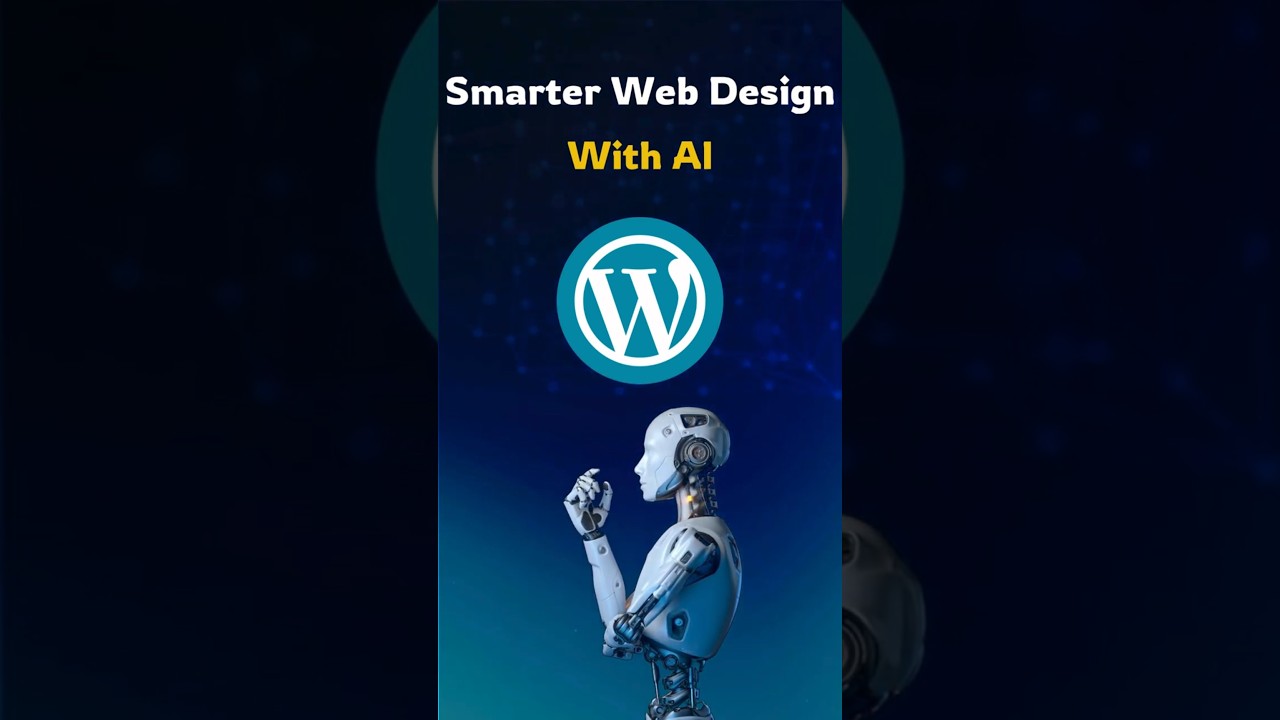Blog
Smarter way to build web design with AI 2025 | Build a smarter website using wordpress & ai tamil

The Evolution of Web Design in 2025: Embracing AI-Driven Solutions
The landscape of web design is undergoing a seismic shift, driven by advancements in artificial intelligence. By 2025, creating a website isn’t just about coding skills or design expertise—it’s about leveraging AI to streamline workflows, enhance creativity, and deliver personalized user experiences. For professionals and businesses in Tamil-speaking regions, this evolution offers unprecedented opportunities to build smarter, faster, and more culturally resonant websites.
Why AI is Redefining Web Development
Artificial intelligence has transitioned from a buzzword to a foundational tool in modern web design. Unlike traditional methods that rely heavily on manual inputs, AI-powered platforms analyze data, predict user behavior, and automate repetitive tasks. This allows designers to focus on strategic creativity rather than getting bogged down by technicalities.
For instance, AI algorithms can now generate responsive layouts, optimize color schemes, and even write basic code snippets. These capabilities are particularly valuable for WordPress users, as the platform’s open-source nature integrates seamlessly with AI plugins and tools. The result? A significant reduction in development time and costs without compromising quality.
WordPress and AI: A Match Made for Innovation
WordPress powers over 40% of websites globally, and its compatibility with AI tools cements its position as a leader in 2025. Here’s how the synergy between WordPress and AI transforms web design:
1. Automated Content Creation and Localization
AI plugins like Jasper and Writesonic now offer Tamil language support, enabling seamless content generation for regional audiences. Whether crafting blog posts or product descriptions, these tools analyze local dialects, cultural nuances, and SEO trends to produce relevant, engaging text. For Tamil businesses, this eliminates language barriers and ensures content resonates deeply with their target demographic.
2. Intelligent Design Assistants
Platforms such as Elementor and Divi have integrated AI assistants that suggest design elements based on user preferences. Input your brand’s color palette or industry, and the tool generates layout options, font pairings, and image recommendations. This feature democratizes design, allowing even non-technical users to create visually stunning websites.
3. AI-Powered SEO Optimization
Ranking high on search engines requires more than keyword stuffing. AI tools like RankMath and Yoast SEO analyze real-time data to recommend meta tags, internal linking strategies, and mobile optimization techniques. For Tamil websites, this includes optimizing for region-specific keywords and ensuring content aligns with local search intent.
Bridging Culture and Technology: AI for Tamil-Centric Websites
Creating a website that appeals to Tamil audiences involves more than translation—it demands cultural intelligence. Modern AI tools address this through:
1. Localized User Experience (UX) Design
AI analyzes user behavior patterns unique to Tamil-speaking regions, such as preferred navigation styles or content consumption habits. This data informs design choices, like placing key CTAs in high-engagement zones or using culturally relevant imagery.
2. Voice Search Optimization
With voice searches in Tamil rising, AI helps optimize websites for conversational queries. Tools like Google’s Natural Language Processing (NLP) understand colloquial phrases and long-tail keywords, ensuring your site ranks well for voice-driven searches.
3. Automated Quality Assurance
AI testing tools like Appvance detect bugs, broken links, and compatibility issues across devices. For multilingual sites, they also verify translations and ensure consistent messaging in Tamil and other languages.
Case Study: A Tamil E-Commerce Platform Transformed by AI
Consider the example of a Chennai-based handicraft store that migrated to WordPress in 2025. By integrating an AI toolkit, the business achieved:
- 30% faster load times via image compression and caching algorithms.
- 50% increase in organic traffic through localized SEO strategies.
- 20% higher conversion rates from personalized product recommendations.
The AI system analyzed customer demographics to suggest traditional design motifs and festive-season promotions, boosting engagement during Pongal and Diwali.
Overcoming Challenges in AI-Driven Web Design
While AI offers immense potential, its adoption isn’t without hurdles:
1. Balancing Automation and Human Creativity
AI can generate templates and content, but human oversight ensures authenticity. Designers must refine AI outputs to align with brand identity and cultural values.
2. Data Privacy Concerns
Collecting user data for personalization requires compliance with regulations like India’s PDP Bill. Transparent data policies and secure hosting are non-negotiables.
3. Language Model Limitations
While AI Tamil translators have improved, occasional inaccuracies persist. Regular audits by native speakers ensure linguistic precision.
The Future of AI in Web Design: Beyond 2025
Emerging technologies promise even greater innovation:
- Generative AI: Tools like DALL-E 3 will create custom visuals from text prompts, reducing dependency on stock images.
- Predictive Analytics: AI will forecast design trends, allowing businesses to stay ahead of competitors.
- Augmented Reality (AR) Integration: WordPress plugins may soon enable AR-powered product previews, enhancing user engagement.
For Tamil developers, staying updated with these trends is crucial. Online communities and local tech forums offer valuable insights into leveraging AI effectively.
Final Thoughts: Embracing AI as a Collaborative Partner
The fusion of WordPress and AI isn’t about replacing designers—it’s about empowering them. By automating mundane tasks, designers can focus on storytelling, user empathy, and innovation. For Tamil businesses, this means creating websites that aren’t just functional but also culturally meaningful.
As we move deeper into 2025, the question isn’t whether to adopt AI, but how to harness its potential responsibly. Start by experimenting with AI plugins, attending workshops, and collaborating with local developers. The future of web design is here, and it’s smarter than ever.
This human-centric approach to AI ensures that technology serves as a bridge—not a barrier—to creating websites that inspire, engage, and endure.

